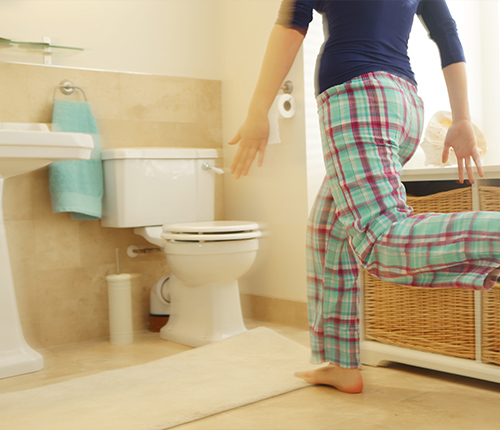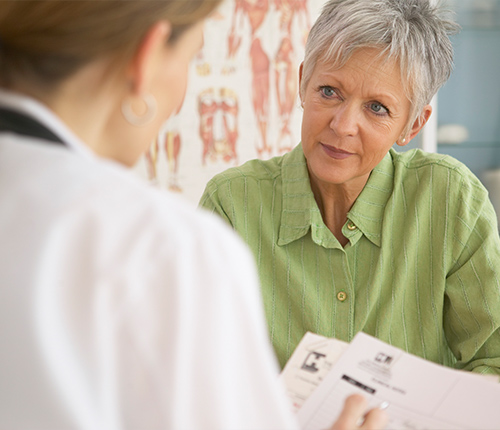HELP FOR OVERACTIVE BLADDER
This complex condition affects about 15% of women across all ages. It is less common in men. Age increases the risk for OAB as do some bladder conditions. Your urologist has solutions for this condition.

Sudden Urge to Urinate
In people with OAB, the bladder muscle is overactive and squeezes too often. These bladder spasms make it feel like you need to urinate often and quickly, even if there isn’t much urine in your bladder. You feel a sudden urge to urinate, sometimes followed by leaking. Sometimes the whole bladder empties.
Diagnosis


Terminology
Urinary urgency (“gotta go right now”): sudden, strong desire to pass urine, which is very difficult to postpone.
Urinary frequency (“gotta go often”): urinating eight or more times per day.
Nocturia: need to urinate one or more times during sleeping hours.
Urinary urge incontinence (UUI): urinary leakage that occurs with the sudden, strong desire to pass urine.
Overactive bladder: urinary urgency, usually with frequency and nocturia, and sometimes with urinary urgency incontinence.
Your Personal OAB Patient Navigators
A patient navigator understands overactive bladder symptoms, causes and treatments. They use their knowledge to guide you through a higher level of care by offering personalized one-on-one communication that lead to the best possible outcomes.
Learn more about how our OAB Patient Navigators can help.
Looking for a second opinion?
We understand how overwhelming it can be to face a recent urologic diagnosis. Our team of experts is here to provide a second opinion, empowering you to make well-informed decisions about your treatment and giving you the peace of mind you deserve. Schedule an appointment with us today, and let’s explore your options together.
Treating Your Condition
- Contact Us
- Dietary Changes
- Bladder Re-training
- Medications
- Pelvic Floor Physical Therapy
- Botox
- Tibial Nerve Stimulation
- Sacral Nerve Stimulation
Ready to learn more? Contact us today to get started.
Coffee, tea, sodas and other beverages with caffeine worsen symptoms. Artificial sweeteners, fruit juices and alcohol can also cause bladder spasms.
People with OAB go to the bathroom often. This causes your bladder to hold less urine, leading to even more frequent bathroom trips. Bladder re-training involves using your pelvic floor muscles and “mind over bladder” techniques to gradually increase time between bathroom visits.
The many OAB medicines on the market are formulated to help your bladder hold more urine for longer periods of time and reduce urine leakage. Your urologist may have you try several different medicines before determining which works best for you.
Pelvic floor muscle exercises can help improve symptoms. For optimal results, your urologist may recommend working with a specialized physical therapist to learn specific techniques. Your doctor can refer you to an appropriate therapist. It may take a few months of regular pelvic floor muscle exercise to see results.
Botox is used to relax the bladder muscle and thus improve overactivity. This allows more urine to be held in the bladder before you have to go to the bathroom. Under a local anesthetic in the office, your doctor uses a small camera and needle to inject Botox into the bladder wall. Typically, the injection needs to be repeated 2 to 3 times a year.
With PTNS, a small needle is inserted near a nerve in the ankle and connected to an external device that delivers small pulses to the nerve. This changes the messaging to the bladder to improve urinary issues.
Sacral nerve stimulation uses a small electric generator implanted near the spine to modulate the bladder nerves to improve urinary control. Typically, a short test is performed without need for anesthesia to see if a more permanent implant would be of benefit.
Make an Appointment
We welcome new patients and patients from our former practices. Please call your local office to make an appointment.

